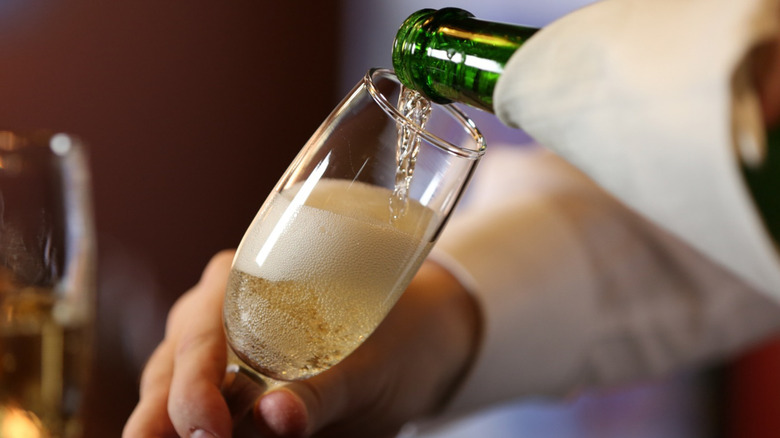No, A Teaspoon Won't Actually Keep A Bottle Of Champagne Carbonated
Champagne, renowned for its effervescence and elegance, has garnered its fair share of myths over the years. One particularly persistent myth claims that placing a teaspoon inside an opened Champagne bottle will help maintain its carbonation. While the concept of using a teaspoon to preserve Champagne's carbonation is a long-held belief, science tells us a different story. The thought that a teaspoon would somehow serve as a barrier to prevent the escape of carbon dioxide gas, keeping the fizz intact, falls flat in the face of the reality of gas diffusion and the properties of Champagne's carbonation.
Champagne's bubbles are primarily composed of carbon dioxide (CO2) gas, which is dissolved within the liquid. When a bottle of Champagne is opened, the pressure inside the bottle decreases, causing the dissolved CO2 to come out of the solution and form bubbles. The primary factors affecting Champagne's carbonation retention are temperature and the quality of the bottle closure. Lower temperatures slow down the escape of CO2, while an airtight closure, like a proper Champagne stopper, is far more effective at preserving fizz compared to a teaspoon. By employing proper temperature control, utilizing quality closures, and exploring modern preservation tools — such as vacuum seal systems, which remove excess air from opened Champagne bottles to help maintain the sparkling quality for a longer period — you can savor the effervescence of Champagne just as its creators intended, without relying on teaspoons or unproven methods.
Debunking the myth
The idea behind the teaspoon myth suggests that inserting a teaspoon into a Champagne bottle's neck would act as a barrier, preventing carbon dioxide (CO2) from escaping and thus maintaining the bubbly carbonation. However, scientific principles and the behavior of CO2 molecules reveal the fallacy of this belief.
A teaspoon placed in the bottle does not establish an airtight or gas-tight seal due to the gaps around its handle and the irregularities of the bottleneck. These openings remain sufficient for CO2 molecules to easily diffuse and escape. CO2 molecules are notably smaller than the gaps around a teaspoon's handle. Even if the teaspoon were to create a partial seal, the minuscule CO2 molecules would diffuse around it, escaping into the surrounding atmosphere. Introducing a teaspoon into the bottle does not disrupt the equilibrium between the dissolved CO2 within the liquid and the CO2 present in the bottle's headspace. When the bottle is uncorked, pressure equalizes, causing the excess dissolved CO2 to escape, irrespective of the teaspoon's presence.

